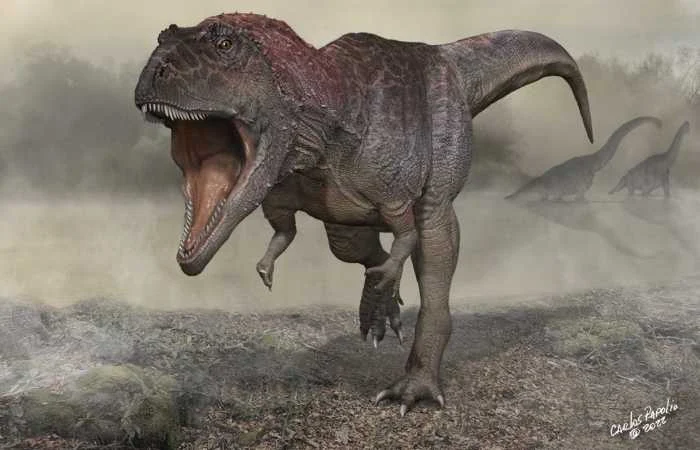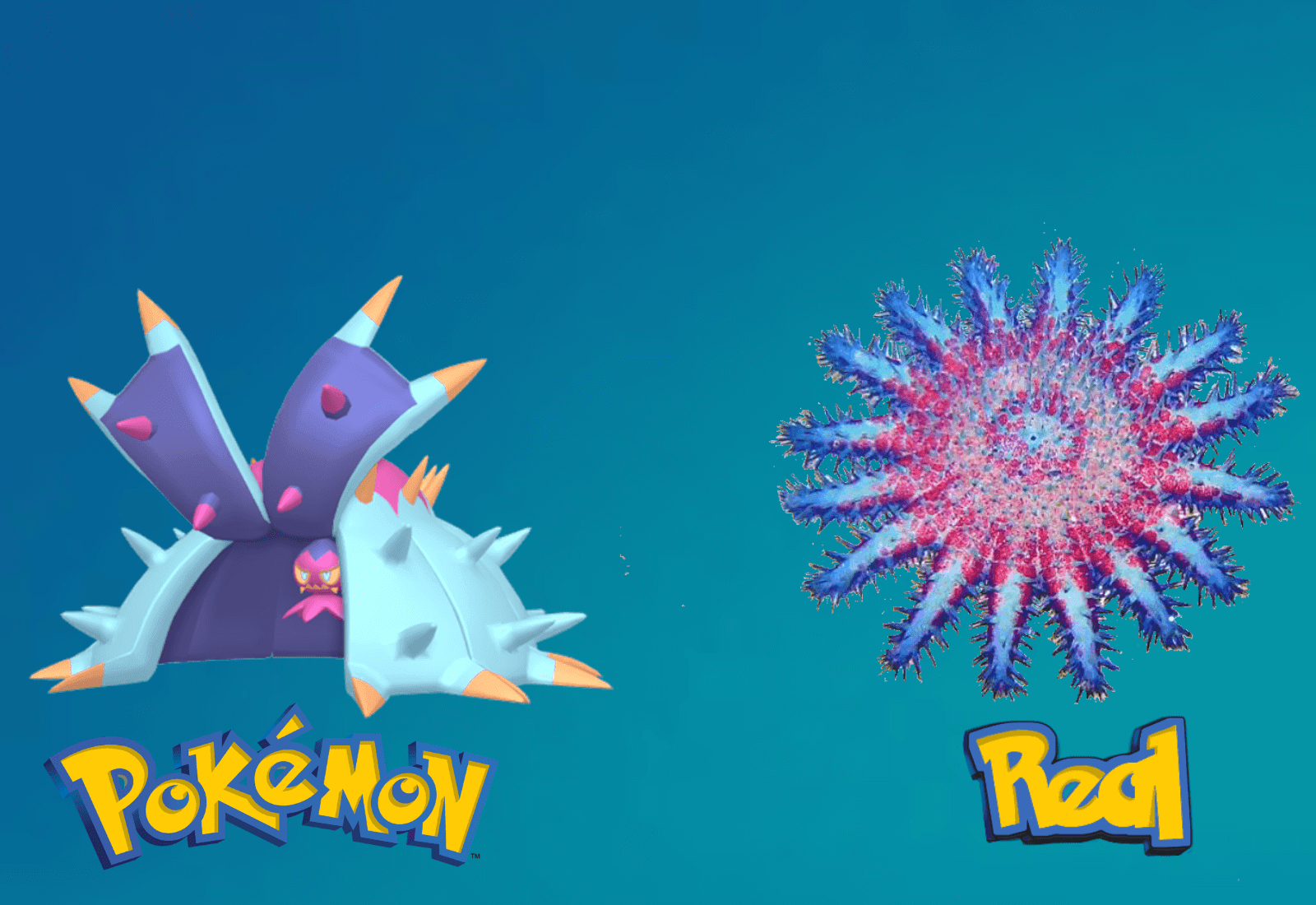Meraxes Gigas - Sickle-Clawed Carcharodontosaurid from the Late Cretaceous
Meraxes Gigas
Scientific classification
Kingdom:
Animalia
Phylum:
Chordata
Clade:
Dinosauria
Clade:
Saurischia
Clade:
Theropoda
Family:
†Carcharodontosauridae
Tribe:
†Giganotosaurini
Genus:
†Meraxes
Canale et al., 2022
Species:
†M. gigas
| Scientific classification | |
|---|---|
| Kingdom: | Animalia |
| Phylum: | Chordata |
| Clade: | Dinosauria |
| Clade: | Saurischia |
| Clade: | Theropoda |
| Family: | †Carcharodontosauridae |
| Tribe: | †Giganotosaurini |
| Genus: | †Meraxes
Canale et al., 2022 |
| Species: | †M. gigas |
Meraxes is a genus of carcharodontosaurid megatheropod from the Late Cretaceous (95–93.9 million years ago) Huincul Formation of Patagonia, Argentina. The genus contains a sole species, Meraxes gigas.
Meraxes is one of the largest theropods, with an estimated weight of 4.26 metric tons (4.70 short tons, 4260 kilograms). Henderson (2023) listed body length estimate of 9–10 meters (30–33 ft), citing Canale et al. (2022), but also projected a body length of 10.2–11.6 meters (33–38 ft) using the pelvic area. Its skull measures 1.27 m (4.2 ft) in length, akin to that of Acrocanthosaurus, which has a skull length of 1.23–1.29 m (4.0–4.2 ft).
The shapes and proportions of various bones, including the skull, scapula, metacarpals, ischial shaft, and foot, indicate that Meraxes and Acrocanthosaurus had similar dimensions and body size. The nasal area has prominent bumps, except for the smooth part around the nostrils, similar to other carcharodontosaurines. The lacrimal bone has ridges and furrows on its lateral surface, with rounded projections along the top edge. A robust brow horn extends from the postorbital bone and is marked by a groove on its side. A long ridge runs along the back edge of the quadrate shaft, unlike those in Acrocanthosaurus and Allosaurus. The frontals are separated by a U-shaped cleft for connecting with the nasals. Similar to Giganotosaurus and Carcharodontosaurus saharicus, the parietal skull table is wide.
Meraxes featured reduced forelimbs, an result of convergent evolution that occurred independently in four distinct lineages: Carcharodontosauridae, Abelisauridae, Tyrannosauridae, and Alvarezsauridae. Additionally, it boasted a distinctive trait unseen in other theropod dinosaurs of similar size: an enlarged sickle-shaped claw on its second toe, nearly double the length of the claw on the fourth toe, a characteristic commonly linked with dromaeosaurs.
Meraxes featured reduced forelimbs, an result of convergent evolution that occurred independently in four distinct lineages: Carcharodontosauridae, Abelisauridae, Tyrannosauridae, and Alvarezsauridae. Additionally, it boasted a distinctive trait unseen in other theropod dinosaurs of similar size: an enlarged sickle-shaped claw on its second toe, nearly double the length of the claw on the fourth toe, a characteristic commonly linked with dromaeosaurs.
The holotype of Meraxes, MMCh-PV 65, discovered in 2012, represents the most complete carcharodontosaurid skeleton identified from the Southern Hemisphere. Additionally, it possesses the most intact cranium among Carcharodontosaurinae, with a total skull length estimated at 127 cm, rivaling even the most complete specimen of Acrocanthosaurus with a 123 cm skull.
Initially referred to as the 'Campanas carcharodontosaurid', it was formally classified as a new species, Meraxes gigas, in 2022 by Canale et al. The generic name 'Meraxes' honors a dragon ridden by Queen Rhaenys Targaryen in the George R. R. Martin novel series, A Song of Ice and Fire, while the specific name, 'gigas', meaning giant in Greek, refers to its large size.
Initially referred to as the 'Campanas carcharodontosaurid', it was formally classified as a new species, Meraxes gigas, in 2022 by Canale et al. The generic name 'Meraxes' honors a dragon ridden by Queen Rhaenys Targaryen in the George R. R. Martin novel series, A Song of Ice and Fire, while the specific name, 'gigas', meaning giant in Greek, refers to its large size.
Osteohistological analysis of the holotype suggests the individual could have been between 39 and 53 years old when it died, having reached skeletal maturity approximately 4 years before its death (between 35 and 49 years old), making it the longest-lived non-avian theropod currently known. Meraxes was determined to have achieved large size by extending its growth period (hypermorphosis), rather than increasing its relative growth rate (acceleration) through development as in Tyrannosaurus, to which it was compared.
C lassification
Phylogenetic analysis recovers Meraxes as the earliest diverging member of the Giganotosaurini, a “mid” Cretaceous clade of South American gigantic (body mass > 4 tons) carcharodontosaurids . The addition of yet another species of giant carcharodontosaurid (body mass estimated: 4,263 kg;) from the lower part of the Huincul Formation, possibly coeval with Taurovenator, and stratigraphically intermediate between Giganotosaurus from the underlying Candeleros Formation and Mapusaurus from younger levels of the Huincul Formation, is further indication of the high diversity of this clade shortly before its extinction by Turonian-Coniacian times.
A comparable diversity of large tyrannosaurids is known from the Campanian of western North America.
Despite their temporal and geographical proximity, Meraxes is readily distinguished from other Giganotosaurini by a suite of characters from throughout the skull and skeleton, including unique protuberances and rugosity patterns on the dermal cranial bones. At a minimum, these differences suggest great lability and increased rates of trait evolution in facial ornamentation that may have had a social signaling role.
Despite their temporal and geographical proximity, Meraxes is readily distinguished from other Giganotosaurini by a suite of characters from throughout the skull and skeleton, including unique protuberances and rugosity patterns on the dermal cranial bones. At a minimum, these differences suggest great lability and increased rates of trait evolution in facial ornamentation that may have had a social signaling role.
Paleoenvironment

The fossil remains of Meraxes were discovered in the Huincul Formation. A significant variety of taxa are known to have inhabited this ancient environment. Theropods from the formation include the paravian Overoraptor, the elaphrosaurine Huinculsaurus, the abelisaurs Skorpiovenator, Tralkasaurus, and Ilokelesia, the megaraptoran Aoniraptor, and the fellow giant carcharodontosaurid Mapusaurus. Meraxes was unearthed in an older rock layer than Mapusaurus, so it is improbable they coexisted. The herbivores of the region are represented by the rebbachisaurid sauropods Cathartesaura and Limaysaurus, the titanosaurs Argentinosaurus, Choconsaurus, and Chucarosaurus, and indeterminate iguanodonts.
References
- Canale, Juan I.; Apesteguía, Sebastián; Gallina, Pablo A.; Mitchell, Jonathan; Smith, Nathan D.; Cullen, Thomas M.; Shinya, Akiko; Haluza, Alejandro; Gianechini, Federico A.; Makovicky, Peter J. (July 2022). "New giant carnivorous dinosaur reveals convergent evolutionary trends in theropod arm reduction". Current Biology. 32 (14): 3195–3202.e5. Retrived on March 5, 2024, from https://doi.org/10.1016/j.cub.2022.05.057 .
- Cullen, Thomas M.; Canale, Juan I.; Apesteguía, Sebastián; Smith, Nathan D.; Hu, Dongyu; Makovicky, Peter J. (25 November 2020). "Osteohistological analyses reveal diverse strategies of theropod dinosaur body-size evolution". Proceedings of the Royal Society B: Biological Sciences. 287 (1939): 20202258.
Retrived on Feb 11, 2023, from https://doi.org/10.1098/rspb.2020.2258.
- Henderson, Donald M. (2023). "Growth constraints set an upper limit to theropod dinosaur body size". The Science of Nature. 110 (1). 4.
Retrived on Feb 11, 2023, from https://doi.org/10.1007/s00114-023-01832-1.
- Currie, Philip J.; Carpenter, Kenneth (2000). "A new specimen of Acrocanthosaurus atokensis (Theropoda, Dinosauria) from the Lower Cretaceous Antlers Formation (Lower Cretaceous, Aptian) of Oklahoma, USA". Geodiversitas. 22 (2): 207–246.
Retrived on Feb 11, 2023, from https://www.researchgate.net/publication/40662847_A_new_specimen_of_Acrocanthosaurus_atokensis_Theropoda_Dinosauria_from_the_Lower_Cretaceous_Antlers_Formation_Lower_Cretaceous_Aptian_of_Oklahoma_USA.
- Motta, M.J., Agnolín, F., Brissón Egli, F. et al. New theropod dinosaur from the Upper Cretaceous of Patagonia sheds light on the paravian radiation in Gondwana. Sci Nat 107, 24 (2020).
Retrived on Feb 11, 2023, from https://doi.org/10.1007/s00114-020-01682-1.
- M.A. Cerroni, M.J. Motta, F.L. Agnolín, A.M. Aranciaga Rolando, F. Brissón Egli, F.E. Novas,
A new abelisaurid from the Huincul Formation (Cenomanian-Turonian; Upper Cretaceous) of Río Negro province, Argentina,Journal of South American Earth Sciences,
Volume 98,
2020,
102445,
ISSN 0895-9811,
Retrived on Feb 11, 2023, from https://doi.org/10.1016/j.jsames.2019.102445.
- Mattia A. Baiano, Rodolfo A. Coria, Andrea Cau, A new abelisauroid (Dinosauria: Theropoda) from the Huincul Formation (lower Upper Cretaceous, Neuquén Basin) of Patagonia, Argentina,
Cretaceous Research,
Volume 110,
2020,
104408,
ISSN 0195-6671,
Retrived on Feb 11, 2023, from https://doi.org/10.1016/j.cretres.2020.104408.
- Federico L. Agnolin, Bernardo J. Gonzalez Riga, Alexis M. Aranciaga Rolando, Sebastián Rozadilla, Matías J. Motta, Nicolás R. Chimento, Fernando E. Novas, A new giant titanosaur (Dinosauria, Sauropoda) from the Upper Cretaceous of Northwestern Patagonia, Argentina,
Cretaceous Research,
Volume 146,
2023,
105487,
ISSN 0195-6671.
Retrived on Feb 11, 2023, from https://doi.org/10.1016/j.cretres.2023.105487.







.webp)


Comments
Post a Comment